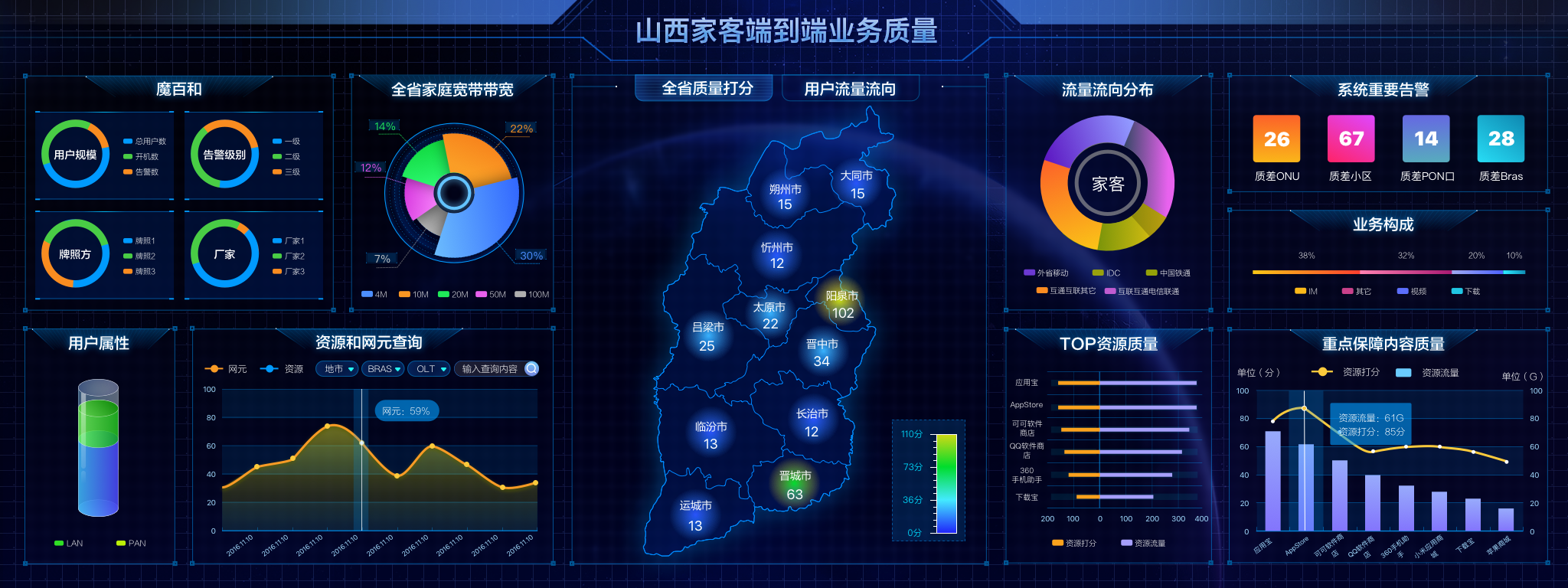一、独立按键
按键的作用相当于一个开关,按下时接通(或断开),松开后断开(或接通)。

(1)需求
通过SW1、SW2、SW3、SW4四个独立按键分别控制LED1、LED2、LED3、LED4的亮灭,具体要求是,按一下(按下并松开)SW,LED点亮,再按一下SW,LED熄灭。
(2)硬件设计
<1>思路
为实现上述需求,需要设法令单片机感知到按键被按下,也就是说在按键被按下时,需要向单片机发送一个信号,当单片机收到该信号后,再执行控制LED的逻辑即可。
由于51单片机的GPIO引脚的默认均为高电平,因此只需将按键的一侧接入单片机的某个GPIO引脚,另一侧接地。这样一来,当按键按下时,引脚直接接地,就相当于向单片机发送了一个低电平信号。

<2>原理图

SW1 P42
SW2 P43
SW3 P32
SW4 P33
<3>软件设计
按照原理图,SW1按下时,P4.2引脚会被拉低;SW2按下时,P4.3引脚会被拉低;SW3被按下时,P3.2引脚会被拉低;SW4按下时,P3.3引脚会被拉低。
因此只需检测上述引脚是否变为低电平即可,若检测到变为低电平,就执行控制LED的逻辑。需要注意的是,按键的检测需要持续进行,所以需要不停的检查上述引脚是否变为低电平。
P42=0,SW1被按下,LED1亮 P00=0,再按下SW1,P00=1,LED1灭。独立按键一直实现低电平才能控制亮灭。
#include <STC89C5xRC.H>
#define SW1 P42
#define SW2 P43
#define SW3 P32
#define SW4 P33
#define LED1 P00
#define LED2 P01
#define LED3 P02
#define LED4 P03
void main()
{
while (1) { // 持续检测按键
if (SW1 == 0) {
LED1 = ~LED1;
}
if (SW2 == 0) {
LED2 = ~LED2;
}
if (SW3 == 0) {
LED3 = ~LED3;
}
if (SW4 == 0) {
LED4 = ~LED4;
}
}
}这个有缺陷,出现上述现象的原因是,当前代码的逻辑存在问题。当前代码的逻辑是,当按键处在按下的状态时,控制LED的逻辑会被多次触发,也就是LED会快速的闪烁,由于速度过快,人眼不能分辨出来,所以看起来LED就常亮的,但是亮度要比正常情况下低。当按键抬起后,控制LED的逻辑便不会再触发,此时LED会随机的处在按键抬起前最后一刻的状态。
要解决上述问题,就需要确保按键被按下时,控制LED的逻辑只被触发一次。
按键单次触发:
当前代码的逻辑是,只要按键处在按下的状态,就触发控制LED的逻辑。为实现单次触发,可以在按键按下后,等待按键抬起,并在抬起的一刻,执行控制LED的逻辑。
#include <STC89C5xRC.H>
#define SW1 P42
#define SW2 P43
#define SW3 P32
#define SW4 P33
#define LED1 P00
#define LED2 P01
#define LED3 P02
#define LED4 P03
void main()
{
while (1) { // 持续检测按键
if (SW1 == 0) {
while (SW1 == 0); // 等待按键抬起
LED1 = ~LED1;
}
if (SW2 == 0) {
while (SW2 == 0);
LED2 = ~LED2;
}
if (SW3 == 0) {
while (SW3 == 0);
LED3 = ~LED3;
}
if (SW4 == 0) {
while (SW4 == 0);
LED4 = ~LED4;
}
}
}上述代码已经能够实现预期效果了,但是偶尔会“失灵”。这个现象是由按键的物理特性导致的,由于按键内部的弹簧和触点具有弹性,当按键被按下或释放时,这些弹性材料会震动,从而导致触点在短时间内反复接触和断开。所以表面上我们虽然只按了一次按键,但实际上是按了多次。
了解了按键抖动的问题,也就能够解释当前的现象了。如果实际按下的次数是奇数,那么LED就会按照预期点亮或熄灭;而如果是偶数,LED最终还是会回到按下按键之前的状态,看起来就像是按键“失灵”了。
按键消抖

所以,当我们检测到信号为0时,不能莽撞的认为按键已经被按下了,而是要稍微等一段时间(约10ms),等按键稳定之后,再次检测,如果信号仍然为0,才可以确定按键确实被按下了。具体代码如下。
#include <STC89C5xRC.H>
#include "Com_Util.h"
#define SW1 P42
#define SW2 P43
#define SW3 P32
#define SW4 P33
#define LED1 P00
#define LED2 P01
#define LED3 P02
#define LED4 P03
void main()
{
while (1)
{
if (SW1==0)
{
Com_Util_Delay1ms(10);
if(SW1==0){
while (SW1==0);
LED1=~LED1;
}
}
if (SW2==0)
{
Com_Util_Delay1ms(10);
if(SW2==0){
while (SW2==0);
LED2=~LED2;
}
}
if (SW3==0)
{
Com_Util_Delay1ms(10);
if(SW3==0){
while (SW3==0);
LED3=~LED3;
}
}
if (SW4==0)
{
Com_Util_Delay1ms(10);
if(SW4==0){
while (SW4==0);
LED4=~LED4;
}
}
}
while (1) {
}
}<4>规范代码
我们将检测按键的代码单独抽取到Int层
Int_Key.c
#include "Int_Key.h"
#define SW1 P42
#define SW2 P43
#define SW3 P32
#define SW4 P33
bit Int_Key_IsSW1Pressed()
{
if (SW1 == 0) {
Com_Util_Delay1ms(10); // 延时消抖
if (SW1 == 0) {
return 1;
}
}
return 0;
}
bit Int_Key_IsSW2Pressed()
{
if (SW2 == 0) {
Com_Util_Delay1ms(10); // 延时消抖
if (SW2 == 0) {
while (SW2 == 0); // 等待按键抬起
return 1;
}
}
return 0;
}
bit Int_Key_IsSW3Pressed()
{
if (SW3 == 0) {
Com_Util_Delay1ms(10); // 延时消抖
if (SW3 == 0) {
return 1;
}
}
return 0;
}
bit Int_Key_IsSW4Pressed()
{
if (SW4 == 0) {
Com_Util_Delay1ms(10); // 延时消抖
if (SW4 == 0) {
while (SW4 == 0); // 等待按键抬起
return 1;
}
}
return 0;
}Int_Key.h
#ifndef __INT_KEY_H__
#define __INT_KEY_H__
#include <STC89C5xRC.H>
#include "Com_Util.h"
//检查按键SW1是否放下
//bit是否
bit Int_Key_IsSW1Pressed();
bit Int_Key_IsSW2Pressed();
bit Int_Key_IsSW3Pressed();
bit Int_Key_IsSW4Pressed();
#endif /* __INT_KEY_H__ */main.c
#include "Int_Key.h"
#define LED1 P00
#define LED2 P01
#define LED3 P02
#define LED4 P03
void main()
{
while (1) {
if (Int_Key_IsSW1Pressed()) {
LED1 = ~LED1;
}
if (Int_Key_IsSW2Pressed()) {
LED2 = ~LED2;
}
if (Int_Key_IsSW3Pressed()) {
LED3 = ~LED3;
}
if (Int_Key_IsSW4Pressed()) {
LED4 = ~LED4;
}
}
}二、矩阵按键
1.需求
按下按键矩阵中的SW5到SW20按键后,数码管显示对应的按键编号。
2.硬件设计
由于按键矩阵中共有4x4=16个按键,如果每个按键都接入一个GPIO引脚,势必会造成引脚的浪费,为了节省引脚,我们同样可以借用动态扫描的思想,具体逻辑如下。

扫描流程:
将第一行进行检测,置为0接地。只要p24、p25、p26、p27.谁变成低电平,就是那个被按了。
故,第二行也是如此。这四行只能有一行接地,才能知道哪个按了。之后三四行依次接地。

选中哪一行,哪一行的引脚都会成为低电平,按下改行的按钮,该列的引脚电平会拉低。
行:P20 P21 P22 P23
列:P24 P25 P26 P27 默认都是高电平,只有按下按钮导通才会拉低电平。
3.软件设计
需求:按下SW5--SW20,数码管显示对应的编号。
检查是否被按下,函数返回编号,编号被数码管函数调用刷新显示。
Int_KeyMatrix.h
#ifndef __INT_KEYMATRIX_H__
#define __INT_KEYMATRIX_H__
#include "Com_Util.h"
//检测按键是否被按下,如果被按下就返回,否则返回0
u8 Int_KeyMatrix_CheckSW();
#endif /* __INT_KEYMATRIX_H__ */Int_KeyMatrix.c
#include "Int_KeyMatrix.h"
#include <STC89C5xRC.H>
u8 Int_KeyMatrix_CheckSW()
{
//检测第一行
P2=0XFE;//1111 1110
if (P24==0)
{
Com_Util_Delay1ms(10);
if(P24==0)
{
while (P24=0);
return 5;
}
}
if (P25==0)
{
Com_Util_Delay1ms(10);
if(P25==0)
{
while (P25=0);
return 6;
}
}
if (P26==0)
{
Com_Util_Delay1ms(10);
if(P26==0)
{
while (P26=0);
return 7;
}
}
if (P27==0)
{
Com_Util_Delay1ms(10);
if(P27==0)
{
while (P27=0);
return 8;
}
}
//检测第二行
P2=0xFD; //1111 1101
if (P24==0)
{
Com_Util_Delay1ms(10);
if(P24==0)
{
while (P24=0);
return 9;
}
}
if (P25==0)
{
Com_Util_Delay1ms(10);
if(P25==0)
{
while (P25=0);
return 10;
}
}
if (P26==0)
{
Com_Util_Delay1ms(10);
if(P26==0)
{
while (P26=0);
return 11;
}
}
if (P27==0)
{
Com_Util_Delay1ms(10);
if(P27==0)
{
while (P27=0);
return 12;
}
}
//检测第三行
P2=0XFB; //1111 1011
if (P24==0)
{
Com_Util_Delay1ms(10);
if(P24==0)
{
while (P24=0);
return 13;
}
}
if (P25==0)
{
Com_Util_Delay1ms(10);
if(P25==0)
{
while (P25=0);
return 14;
}
}
if (P26==0)
{
Com_Util_Delay1ms(10);
if(P26==0)
{
while (P26=0);
return 15;
}
}
if (P27==0)
{
Com_Util_Delay1ms(10);
if(P27==0)
{
while (P27=0);
return 16;
}
}
//检测第四行
P2=0XF7; //1111 0111
if (P24==0)
{
Com_Util_Delay1ms(10);
if(P24==0)
{
while (P24=0);
return 17;
}
}
if (P25==0)
{
Com_Util_Delay1ms(10);
if(P25==0)
{
while (P25=0);
return 18;
}
}
if (P26==0)
{
Com_Util_Delay1ms(10);
if(P26==0)
{
while (P26=0);
return 19;
}
}
if (P27==0)
{
Com_Util_Delay1ms(10);
if(P27==0)
{
while (P27=0);
return 20;
}
}
}Int_DigitalTube.h
#ifndef __INT_DIGITALTUBE_H__
#define __INT_DIGITALTUBE_H__
#define SMG_EN P36
#define LED_EN P34
#include "Com_Util.h"
void Int_DigitalTube_Init();
void Int_DigitalTube_DisplayNum(u32 num);
void Int_DigitalTube_Refresh();
#endif /* __INT_DIGITALTUBE_H__ */Int_DigitalTube.c
#include "Int_DigitalTube.h"
#include <STC89C5xRC.H>
// 数字0-9的编码
static u8 s_codes[10] = {
0x3F, // 0
0x06, // 1
0x5B, // 2
0x4F, // 3
0x66, // 4
0x6D, // 5
0x7D, // 6
0x07, // 7
0x7F, // 8
0x6F // 9
};
static u8 s_buffer[8];
void Int_DigitalTube_Init()
{
SMG_EN = 0;
LED_EN = 0;
}
/**
* @brief 内部方法,让数码管某一位显示特定数字
*
* @param position 片选, 从左到右[0-7]
* @param num_code 显示想要的数字编码
*/
static void Int_DigitalTube_DisplaySingle(u8 position, u8 num_code)
{
P0 = 0x00;
// 位选:P15 P14 P13
position <<= 3;
P1 &= 0xC7;
P1 |= position;
// 段选:P0
P0 = num_code;
}
void Int_DigitalTube_DisplayNum(u32 num)
{
u8 i;
for (i = 0; i < 8; i++) {
s_buffer[i] = 0x00;
}
if (num == 0) {
s_buffer[7] = s_codes[0];
return;
}
i = 7;
while (num > 0) {
s_buffer[i] = s_codes[num % 10];
num /= 10;
i--;
}
}
void Int_DigitalTube_Refresh()
{
u8 i;
for (i = 0; i < 8; i++) {
Int_DigitalTube_DisplaySingle(i, s_buffer[i]);
Com_Util_Delay1ms(1);
}
}
main.c
#include "Int_KeyMatrix.h"
#include "Int_DigitalTube.h"
void main()
{
u8 key;
Int_DigitalTube_Init();
while (1)
{
key=Int_KeyMatrix_CheckSW();
if (key)
{
Int_DigitalTube_DisplayNum(key);
}
Int_DigitalTube_Refresh();
}
}4.按键阻塞问题
按下按键不松手的时候,扫描停了,数码管数字只显示最后一位,而且非常亮。

阻塞到了检测步骤,所以最后一个亮,但不扫描了,所以这样了。
5.改造矩阵按键代码
只需改造Int_KeyMatrix.c
#include "Int_KeyMatrix.h"
#include <STC89C5xRC.H>
u8 Int_KeyMatrix_CheckSW()
{
u8 i;
u8 lines[4]={0xFE,0XFD,0XFB,0XF7};
for ( i = 0; i < 4; i++)
{
P2=lines[i];
if (P24==0)
{
Com_Util_Delay1ms(10);
if(P24==0)
{
while (P24=0);
return 5+4*i;
}
}
if (P25==0)
{
Com_Util_Delay1ms(10);
if(P25==0)
{
while (P25=0);
return 6+4*i;
}
}
if (P26==0)
{
Com_Util_Delay1ms(10);
if(P26==0)
{
while (P26=0);
return 7+4*i;
}
}
if (P27==0)
{
Com_Util_Delay1ms(10);
if(P27==0)
{
while (P27=0);
return 8+4*i;
}
}
}
}
把代表行的值写入数组,for循环遍历数组,循环每一行,找到i与列数值上的变化规律。



















